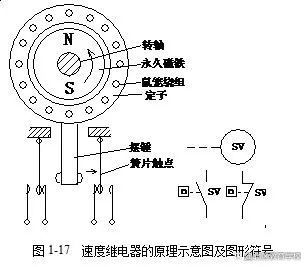There are eight categories of relays, and each category has different uses and characteristics. How to choose?
control relay
There are many types of relays, which can be divided into voltage relays, current relays, time relays, speed relays, pressure relays, etc. according to the input volume; according to the working principle, they can be divided into electromagnetic relays, inductive relays, electric relays, electronic relays, etc.; According to the purpose, it can be divided into control relay, protection relay, etc.; according to the change form of input quantity, it can be divided into presence relay and measurement relay.
Electromagnetic relay
Most of the relays used in the control circuit are electromagnetic relays. Electromagnetic relay has the advantages of simple structure, low price, convenient use and maintenance, small contact capacity (generally below 5A), large number of contacts and no main or auxiliary points, no arc extinguishing device, small size, fast and accurate action, The control is sensitive and reliable, and it is widely used in low-voltage control systems.
Commonly used electromagnetic relays include current relays, voltage relays, intermediate relays, and various small general-purpose relays.
Intermediate relay
The intermediate relay is one of the most commonly used relays, and its structure is basically the same as that of the contactor. The intermediate relay plays the function of logic conversion and state memory in the control circuit, and is used to expand the capacity and number of contacts.
current relay
The input quantity of the current relay is current, and it is a relay that operates according to the magnitude of the input current. The coil of the current relay is connected in series to the circuit to reflect the change of the circuit current. The coil has few turns, the wire is thick, and the impedance is small. Current relays can be divided into undercurrent relays and overcurrent relays.
thermal relay
Thermal relays are mainly used for overload protection of electrical equipment (mainly motors). Thermal relay is an electrical appliance that works on the principle of current thermal effect. It has inverse time-limit action characteristics similar to the allowable overload characteristics of motors. It is mainly used in conjunction with contactors for overload and phase failure protection of three-phase asynchronous motors.
speed relay
The speed relay is also called the reverse connection braking relay, which is mainly used for the reverse connection braking control of the three-phase squirrel-cage asynchronous motor. Figure 1-17 is the schematic diagram and graphic symbols of the speed relay, which is mainly composed of three parts: rotor, stator and contacts. The rotor is a cylindrical permanent magnet, and the stator is a squirrel-cage hollow ring made of silicon steel sheets and equipped with squirrel-cage windings.

Liquid level relay
The liquid level relay is mainly used to detect the level of the liquid and send a switch signal to control the level of the liquid level by controlling the solenoid valve, liquid pump and other equipment. There are many types of liquid level relays, and their working principles are also different.
pressure switch
The pressure relay is mainly used to detect the level of liquid or gas pressure and send out a switch signal to control the level of pressure by controlling solenoid valves, liquid pumps and other equipment. Figure 1-19 is a schematic diagram of the structure of the pressure relay and its graphic symbols.









